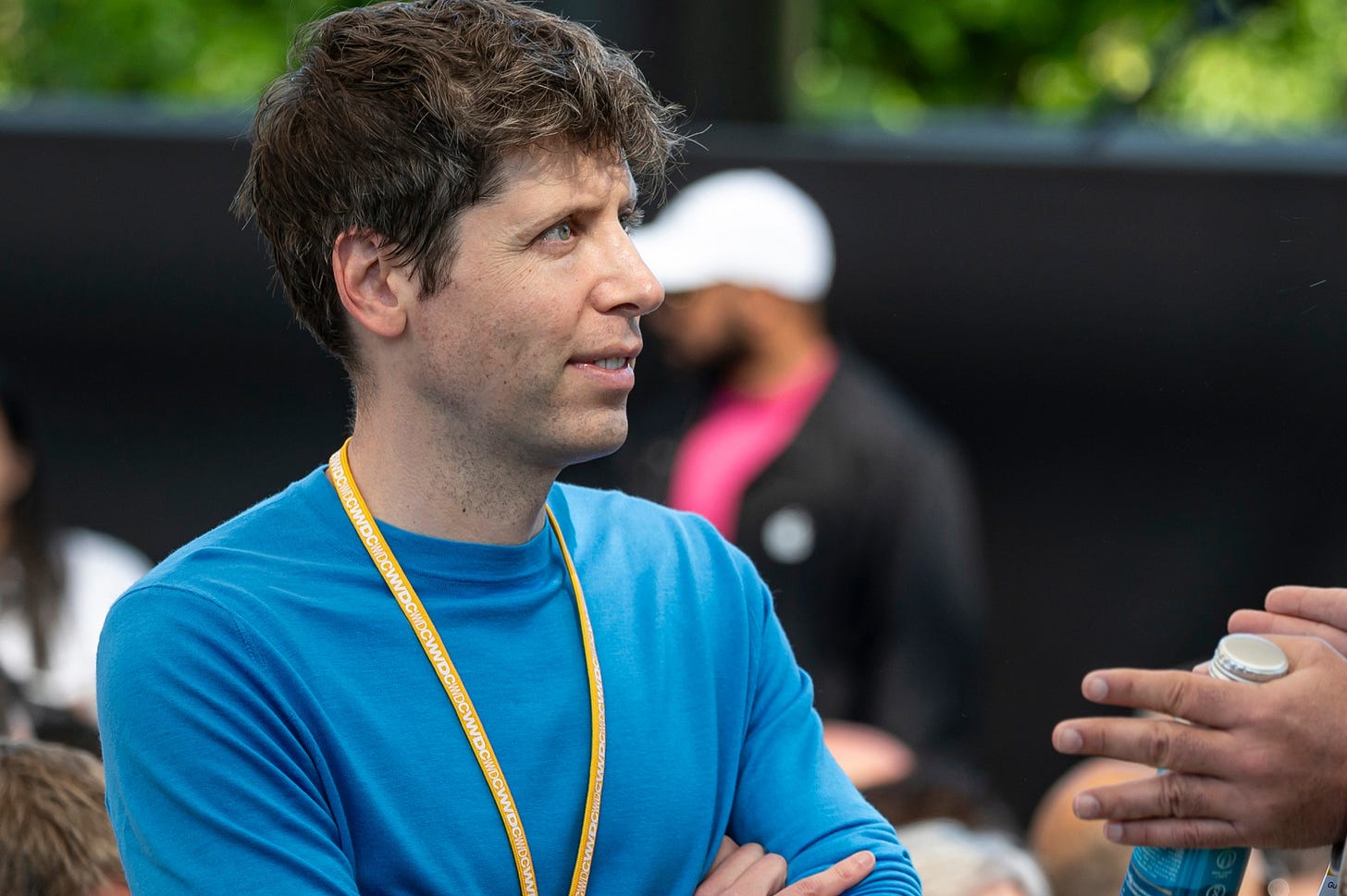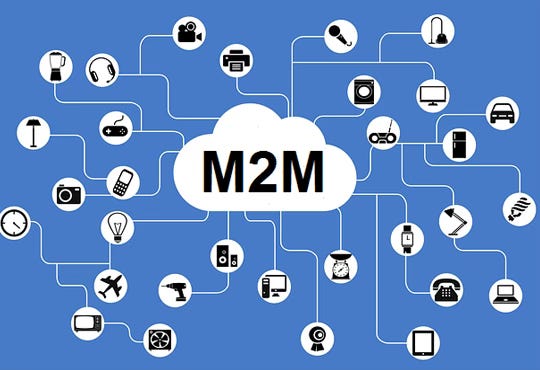The Bigger Picture, October 13, 2024
Within a few weeks of each other, we now have two essays on what AI’s path to ‘AGI’ (artificial general intelligence, or superintelligence) may look like in a ‘few years’. Each penned by the founders of the two leading LLM AI ‘cousin’ companies in the world. OpenAI’s Sam Altman published ‘The Intelligence Age’ on 10/23, and now Anthropic’s Dario Amodei has his take in ‘Machines of Loving Grace: How AI could transform the world for the Better’. And as I discussed the former, thought it’d be useful to discuss the latter in this Sunday’s ‘The Bigger Picture’.
They’re both useful bookends to read, this early in the AI Tech Wave. Sam’s essay is 1,111 words, while Dario’s is 14,685 including footnotes. They both have a lot to say on the future of AI, regardless of the length of their essays.
If the pithy takeaway from Sam’s piece was ‘deep learning worked’, the same from Dario’s piece are likely these seven words, ‘A country of geniuses in a datacenter’. Further condensed into ‘Machines of Loving Grace’, included in the title.
Dario uses these words to describe the AI model he has in mind, that are far beyond today’s monolithic ‘LLM AIs’ in form. As he puts it:
“They might be based on a different architecture, might involve several interacting models, and might be trained differently—with the following properties”.
“In terms of pure intelligence4, it is smarter than a Nobel Prize winner across most relevant fields – biology, programming, math, engineering, writing, etc. This means it can prove unsolved mathematical theorems, write extremely good novels, write difficult codebases from scratch, etc.”
“In addition to just being a “smart thing you talk to”, it has all the “interfaces” available to a human working virtually, including text, audio, video, mouse and keyboard control, and internet access. It can engage in any actions, communications, or remote operations enabled by this interface, including taking actions on the internet, taking or giving directions to humans, ordering materials, directing experiments, watching videos, making videos, and so on. It does all of these tasks with, again, a skill exceeding that of the most capable humans in the world.”
“It does not just passively answer questions; instead, it can be given tasks that take hours, days, or weeks to complete, and then goes off and does those tasks autonomously, in the way a smart employee would, asking for clarification as necessary.”
“It does not have a physical embodiment (other than living on a computer screen), but it can control existing physical tools, robots, or laboratory equipment through a computer; in theory it could even design robots or equipment for itself to use.”
“The resources used to train the model can be repurposed to run millions of instances of it (this matches projected cluster sizes by ~2027), and the model can absorb information and generate actions at roughly 10x-100x human speed5. It may however be limited by the response time of the physical world or of software it interacts with.”
“Each of these million copies can act independently on unrelated tasks, or if needed can all work together in the same way humans would collaborate, perhaps with different subpopulations fine-tuned to be especially good at particular tasks.”
“We could summarize this as a “country of geniuses in a datacenter”.”
Indeed, it gives bigger life and meaning to the tens going to hundreds of billions of dollars being expended on ‘AI Table Stakes’ datacenters I’ve talked about at length here. Including the massive amounts of power needed to keep it all going. And the debate around it all.
It echoes the capabilities of ‘AGI’ laid out in the ‘Level 1 to Level 5’ roadmap laid out by OpenAI below. From ‘chatbots’ to ‘reasoning AI’, to ‘agentic AI’ and beyond.
And of course Anthropic’s ‘trademark’ focus on ‘AI Safety’, which Dario of course addresses right up front:
“I think and talk a lot about the risks of powerful AI. The company I’m the CEO of, Anthropic, does a lot of research on how to reduce these risks. Because of this, people sometimes draw the conclusion that I’m a pessimist or “doomer” who thinks AI will be mostly bad or dangerous. I don’t think that at all. In fact, one of my main reasons for focusing on risks is that they’re the only thing standing between us and what I see as a fundamentally positive future. I think that most people are underestimating just how radical the upside of AI could be, just as I think most people are underestimating how bad the risks could be.”
It is that ‘radical upside of AI’ of course that the world is so transfixed by this AI Tech Wave to date. With the second anniversary of OpenAI’s ‘ChatGPT moment’ coming up next month.
And why I’ve devoted years, and particularly the last 508 plus consecutive days thinking and writing about it.
A core takeaway from both these essays for me is that we’re not talking about ‘AI’, but ‘AIs’. Lots of them. What I call ‘machine to human’, (m2h) and machine to machine (m2m).
As I put it in ‘Not AI, but AIs’ in post #347 earlier this May:
“While many are obsessed about the existential and the initially job-sapping potential of AI, what may be missed, is that it’s billions and billions of AIs are coming that we should be truly excited about. Not ‘Coming for Us’, in the ‘coming for us’ sense, but ‘coming for us’ to see and do far more with just our ‘HI’, ‘Human Intelligence’. “
“We’ve been conditioned by our dystopian science fiction, from ‘Skynet’ in ‘The Terminator’, to the ‘Matrix’ in the, well, ‘The Matrix’, and so many more, that there is a singular AI that takes over the world. Becomes our over-lord. Drowns us in Paperclips.”
“Today, as I look at my updated version of the AI Tech Stack below, I’d like to add ‘business to machine’ (b2m), ‘consumer to machine’ (c2m), and most important possibly, '‘machine to machine’ (m2m). The AI training and inference ‘reinforcement learning loops’ in the chart above are going to be comprised of those b2m, c2m, and m2m AI ‘smart agents’. What’s being actively being invented as ‘Agentic Workflows’ I wrote about recently.”
“For every one of us soon will be 10 or more ‘m2m’ AI agents, representing us in every field imaginable, against other agents representing other parties from every field imaginable.”
So when we change our frame work for ‘AI’ to ‘billions of AIs’, it points to a future at least as cumulatively promising as the world of 8 billion souls we have today.
With all their chaos, imperfections, divisions, emotional and irrational thinking, leading to the risks, challenges and possibilities today. Hopefully inching to more rational futures together.
Just possibly assisted together further forward, by billions and eventually trillions of software AI agents. Working constantly and accelerated, on our behalf. In ‘AI utilities’ and ‘factories’ around the world. Creating a net positive for the world. That’s ‘the Bigger Picture’ I take away from both these two essays. Both worth reading.
Not one scary AI, but lots and lots of promising ones.
It’s all because ‘deep learning worked’, and is leading us to ‘A country of geniuses in a datacenter’, in ‘Machines of Loving Grace’.
Or as I like to think about it, ‘We the Compute Powered People’ are going to do a lot more cooler things. Soon. All eight billion of us. Stay tuned.
(NOTE: The discussions here are for information purposes only, and not meant as investment advice at any time. Thanks for joining us here)










